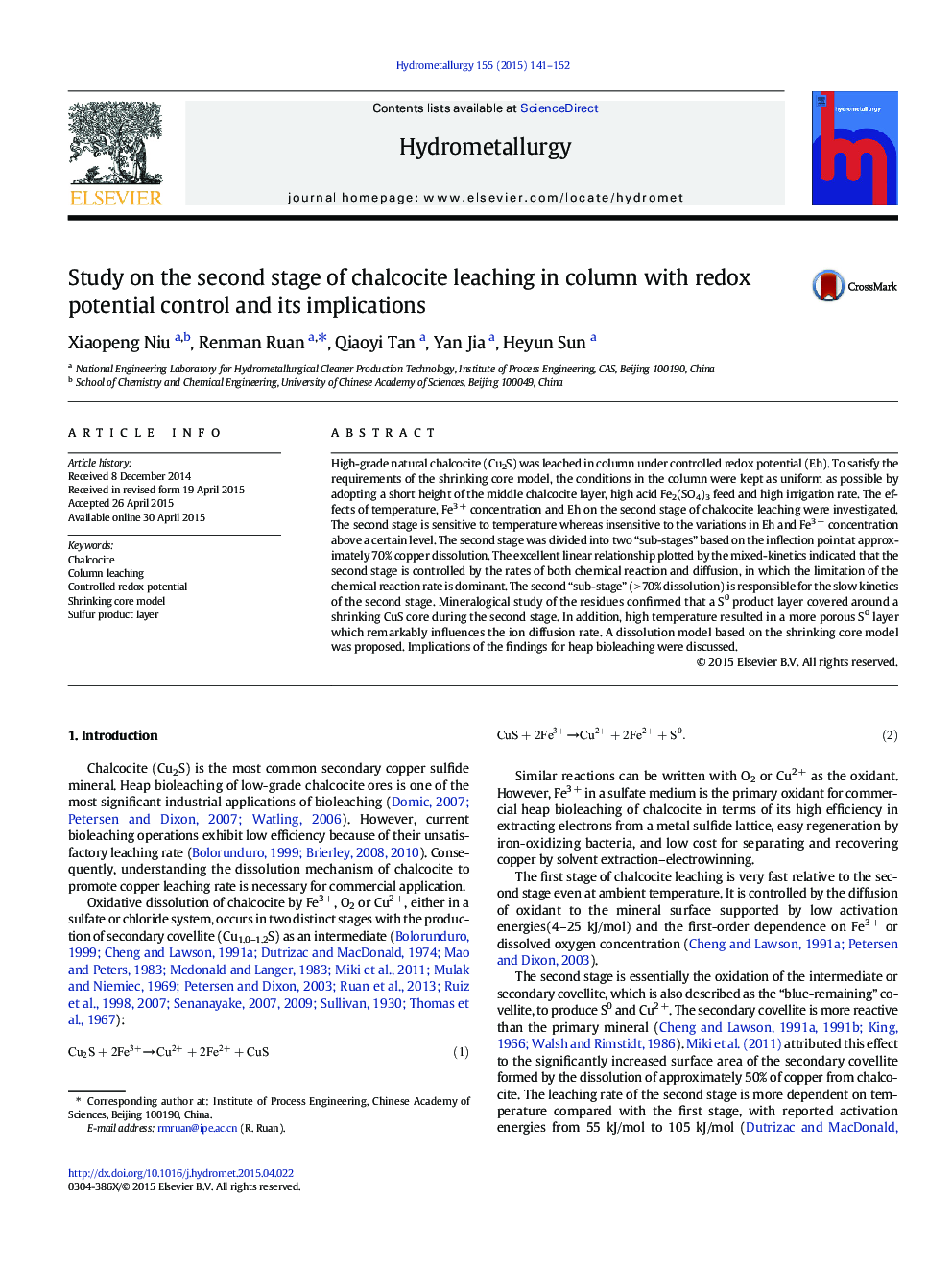| Article ID | Journal | Published Year | Pages | File Type |
|---|---|---|---|---|
| 211931 | Hydrometallurgy | 2015 | 12 Pages |
•Chalcocite dissolution was performed in column under controlled redox potential (Eh).•The second stage satisfied the shrinking core model and it is comprised of two “sub-stages”.•The prominent diffusion barrier caused by the S0 product layer retards the second “sub-stage”.•The second stage is sensitive to temperature whereas insensitive to Eh and Fe3+ concentration above a certain level.•The oxidation of S0 by bacteria is expected to be crucial to accelerate the rate of the second stage leaching.
High-grade natural chalcocite (Cu2S) was leached in column under controlled redox potential (Eh). To satisfy the requirements of the shrinking core model, the conditions in the column were kept as uniform as possible by adopting a short height of the middle chalcocite layer, high acid Fe2(SO4)3 feed and high irrigation rate. The effects of temperature, Fe3 + concentration and Eh on the second stage of chalcocite leaching were investigated. The second stage is sensitive to temperature whereas insensitive to the variations in Eh and Fe3 + concentration above a certain level. The second stage was divided into two “sub-stages” based on the inflection point at approximately 70% copper dissolution. The excellent linear relationship plotted by the mixed-kinetics indicated that the second stage is controlled by the rates of both chemical reaction and diffusion, in which the limitation of the chemical reaction rate is dominant. The second “sub-stage” (> 70% dissolution) is responsible for the slow kinetics of the second stage. Mineralogical study of the residues confirmed that a S0 product layer covered around a shrinking CuS core during the second stage. In addition, high temperature resulted in a more porous S0 layer which remarkably influences the ion diffusion rate. A dissolution model based on the shrinking core model was proposed. Implications of the findings for heap bioleaching were discussed.
Graphical abstractThe S0 product layer covered around the shrinking CuS core.Figure optionsDownload full-size imageDownload as PowerPoint slide
